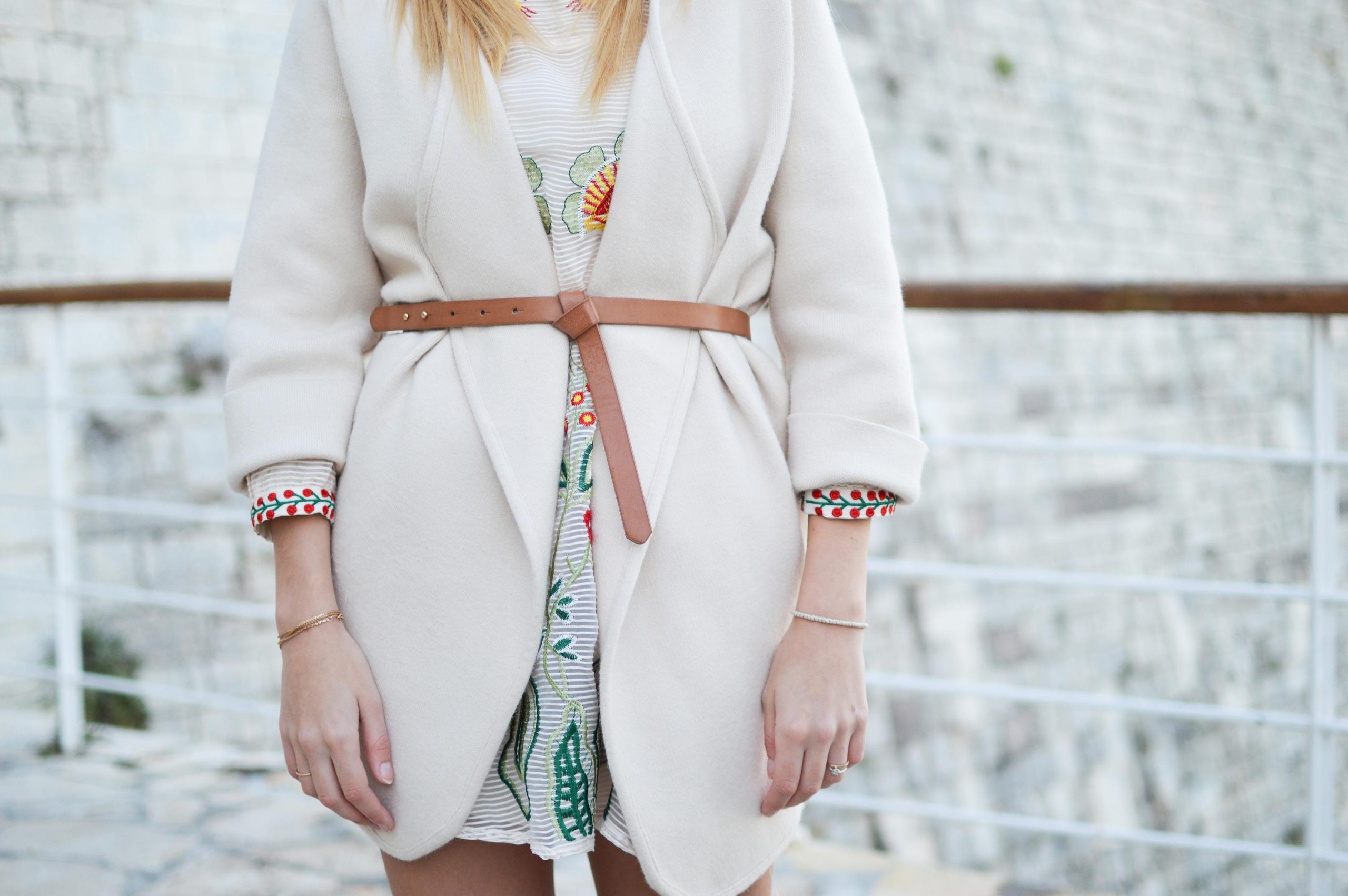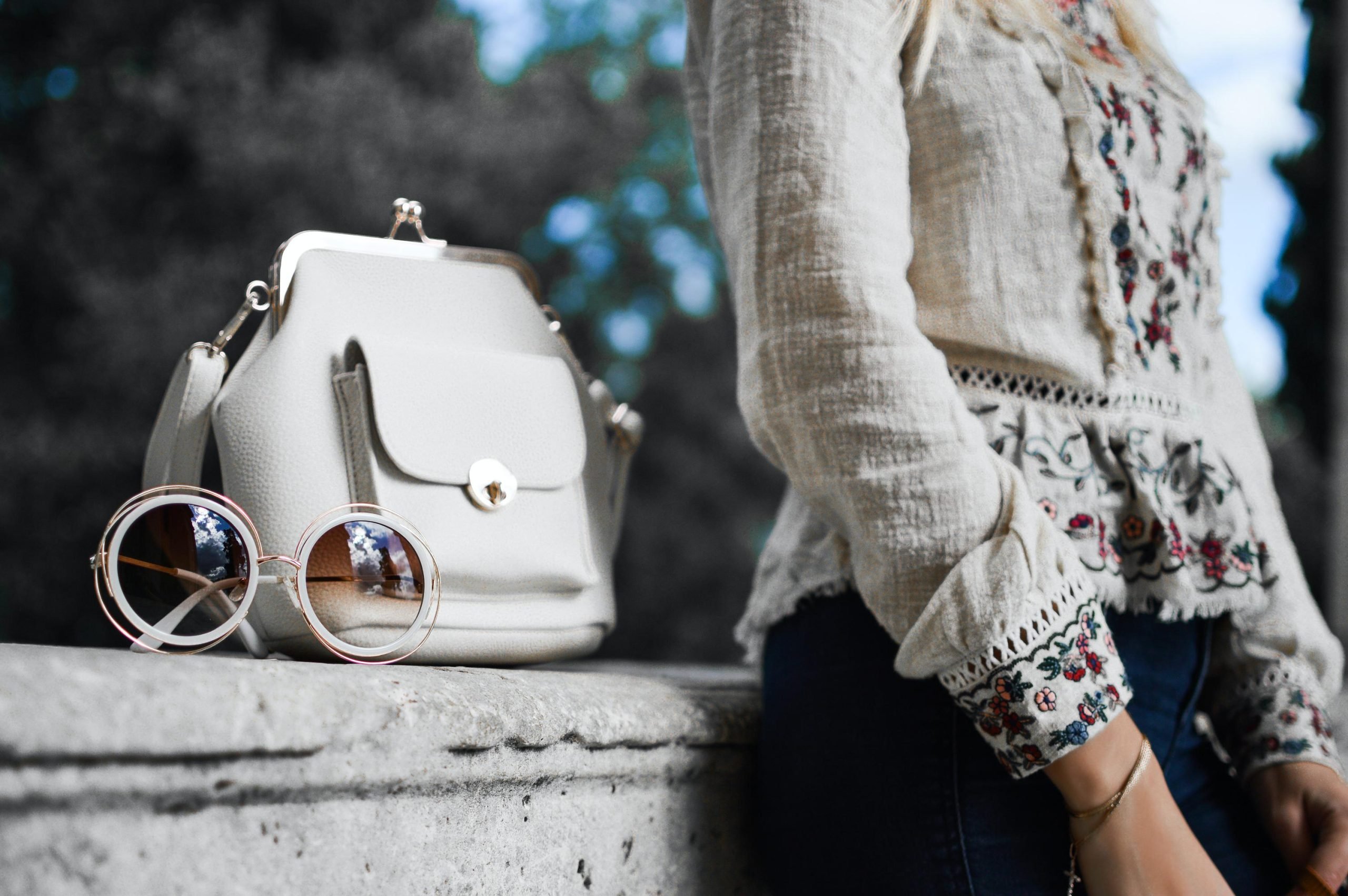The fashion industry has always been an ever-evolving one, with trends and styles constantly changing with time. However, one aspect of fashion that has been getting increasing attention in recent years is children’s fashion.
With parents becoming more invested in dressing their children in unique and stylish outfits, the children’s fashion industry is set to experience a major boom in the coming years. This article will explore the future of children’s fashion, discussing the various trends and developments expected to shape this growing industry. From sustainable and ethically-made clothes to sophisticated and fashionable designs, the future of children’s fashion is set to be an exciting one.
Current Trends in Children’s Fashion
Children’s fashion has come a long way over the years. Today, there are several trends dominating the industry.
One of the most popular ones is gender-neutral clothing, which is designed to be worn by both boys and girls. Another trend is sustainable and eco-friendly clothing, which is made from organic fabrics or recycled materials. Bright, bold colors and prints are also in style, as well as vintage-inspired pieces and streetwear.
Accessories like sunglasses and hats have also become a must-have for children’s outfits. Overall, the current trends in children’s fashion are all about making a statement and expressing individuality.

Genderneutral clothing
In recent years, gender-neutral clothing has become increasingly popular in children’s fashion. This clothing is designed to be worn by both boys and girls, breaking down traditional gender norms and promoting inclusivity. It allows children to express themselves without feeling constrained by societal expectations.
Gender-neutral clothing can range from simple t-shirts and jeans to more elaborate dresses and jumpsuits, all designed with comfort and style in mind. These pieces are not only fashionable but also practical, as they can often be handed down from sibling to sibling regardless of gender.
Expect to see even more gender-neutral options in the future, as the industry continues to embrace diversity and inclusivity.
Sustainable and ecofriendly materials
As the world becomes increasingly aware of the environmental impact of clothing production, sustainable and eco-friendly materials are becoming more prevalent in children’s fashion. Parents are opting for clothing made from organic cotton, bamboo, and other natural fibers that are free from harmful chemicals and pesticides.
Not only are these materials better for the environment, but they are also safer for children who may be more susceptible to allergies and skin irritations.
Additionally, many sustainable clothing brands prioritize fair trade practices, ensuring that workers are paid a fair wage and treated ethically.
As consumers become more conscious of their impact on the planet, we can expect to see a continued shift towards sustainable and eco-friendly clothing options for children.
Athleisure wear
Children’s fashion is also taking a turn towards functional and comfortable clothing. Athleisure wear, which combines athletic and leisure styles, has gained immense popularity in recent years, especially amongst the younger generation.
This trend is all about combining style with comfort and flexibility. Athletic leggings, hoodies, and tracksuits are increasingly becoming popular among children for everyday wear, not just for sports or physical activities.
Parents are looking for clothes that allow their children to move freely and comfortably, without compromising on style.
With athleisure wear, children can be comfortable and trendy at the same time. We can expect to see even more innovative designs and materials that cater to this trend in the future.
Personalization and customization
In addition to functional and comfortable clothing, personalization and customization are becoming increasingly important in children’s fashion. As parents seek to express their children’s individuality and unique personalities, they are turning to personalized clothing options.
This may include monogrammed items, customized graphics and designs, or even clothing that can be tailored to fit a child’s specific measurements.
Brands and retailers are recognizing this trend and offering more options for personalized clothing, including online customization platforms.
As technology continues to advance, we can expect to see even more innovative ways for parents and children to personalize their fashion choices, from 3D printing to augmented reality customization tools.
The future of children’s fashion is all about functional yet personalized clothing options that allow children to express themselves in unique and creative ways.
Technology and Children’s Fashion
As technology advances, it is also playing a significant role in the future of children’s fashion. From wearable tech to interactive designs, technology is enabling fashion brands to create clothing that is more functional, innovative, and engaging for children.
Smart clothing, such as jackets that can adjust to changing weather conditions, or shoes that light up with each step, are just some examples of how technology is transforming children’s fashion. Augmented reality and virtual try-on technology are also making it easier for parents and children to visualize and customize their clothing choices. The integration of technology and fashion is a trend that will only continue to grow in the future.

Smart clothing and wearable technology
One of the most exciting developments in the future of children’s fashion is the rise of smart clothing and wearable technology. These pieces of clothing can do everything from monitoring a child’s vital signs to tracking their activity levels. They are designed to be comfortable, practical, and most importantly, safe for children to wear.
Smart clothing can also be used to help children with disabilities, such as those with visual impairments, by incorporating braille or other tactile elements into the design. By combining technology and fashion, children’s clothing is becoming both more sophisticated and more accessible to a wider range of children.
Overall, the future of children’s fashion looks bright and exciting, thanks to advances in technology, sustainability, and inclusivity. With more options and greater access to fashion, children are sure to feel confident and empowered to express themselves through their clothing choices.
Augmented reality dressing rooms
In the future of children’s fashion, augmented reality dressing rooms could become a common sight. Imagine being able to try on clothes virtually without having to physically change into them! These dressing rooms use advanced technology to create a 3D virtual image of the child’s body, which can then be used to ‘try on’ different outfits.
This technology enables children to see how clothes will look on them before making a purchase, which could save time and reduce waste. Additionally, augmented reality dressing rooms provide a fun and interactive shopping experience for children, making it easier to find clothes they love.
As technology continues to advance, these dressing rooms could become a staple in the world of children’s fashion.
3D printing and fashion design
In addition to augmented reality dressing rooms, 3D printing technology could also play a significant role in the future of children’s fashion. Over the past few years, 3D printing has been making waves in the design world, and it’s only a matter of time before it becomes a popular choice for fashion designers as well. Using 3D printing technology, designers can create unique and intricate pieces that might not have been possible through traditional methods.
It also allows for customization options for kids who want to create their own one-of-a-kind pieces. Overall, 3D printing technology has the potential to revolutionize the way we design and create children’s fashion, offering a limitless range of possibilities.
As technology continues to advance, we can expect to see even more innovative uses of 3D printing in the fashion industry.
Online shopping and ecommerce
The Future of Children’s Fashion is bound to see a significant shift in the way we shop for clothes. With the rise of e-commerce platforms and online shopping, kids’ fashion is no longer limited to physical stores or brick-and-mortar shops. Online shopping means parents can browse through endless options, compare prices, and make purchases from the comfort of their own homes.
This trend is expected to continue to grow, making it easier for moms and dads to find the latest trends and styles for their little ones. The future of online shopping for children’s fashion is exciting and promises to revolutionize the way we shop for clothes.
Future of Children’s Fashion Industry
The children’s fashion industry is also expected to see significant growth in the coming years. As more and more parents shop online, retailers are beginning to focus on creating unique and trendy clothes for kids. Additionally, many brands are becoming more conscious of sustainability and ethical production, creating clothing that is both cute and eco-friendly.
This shift towards sustainable and ethical fashion is likely to continue, making it easier for parents to find clothes that align with their values. As the industry adapts to changing consumer demands, we can expect to see exciting new trends and innovations in children’s fashion.

Increasing demand for sustainable and ethical fashion
In recent years, the fashion industry has been under scrutiny for its negative impact on the environment and human rights. As a result, there’s been a growing demand for sustainable and ethical clothing.
Parents are now actively seeking out clothes for their kids that are made with eco-friendly materials, manufactured under fair labor conditions, and are long-lasting. This trend is expected to continue for the foreseeable future, driving the children’s fashion industry towards a more sustainable and ethical future.
Growing importance of social media and online influencers
Social media and online influencers have become a key aspect of children’s fashion. Instagram and YouTube are full of kids’ fashion influencers, and this has become a significant factor in influencing parents’ purchasing decisions. With the rise of social media, children’s fashion brands have to up their game by collaborating with popular influencers or creating their own social media presence to stand out in the highly competitive market.
This trend is expected to continue as social media continues to dominate our lives, making it more important than ever for children’s fashion brands to keep up and cater to the demands of this growing market.
Inclusive designs for all body types and abilities
Children’s fashion is becoming more inclusive than ever before, with designs catering to all body types and abilities.
This trend is a win-win for both parents and kids, as it promotes body positivity and comfort for all kids regardless of their size or ability.
The industry is beginning to acknowledge that every child is different and has different needs, which is reflected in the design and production of clothing. As a result, we are seeing more adaptive and sensory-friendly clothing options that cater to children with various disabilities and sensory needs.
This trend is expected to continue, making children’s fashion more inclusive and diverse.
Rise of niche brands and customization options
Another trend in children’s fashion is the rise of niche brands and customization options. Parents are looking for unique and personalized options for their kids, and small-scale, independent brands are catering to this demand.
These brands offer unique designs, sustainable production methods, and a focus on quality over quantity.
They also offer customization options, such as monogramming or choosing colors and fabrics for a specific piece of clothing, which adds a special touch to the item and makes it more meaningful to the child and their family.
As parents continue to prioritize uniqueness and sustainability, we can expect to see more niche brands emerging and customization options becoming more popular in children’s fashion.
Integration of artificial intelligence and machine learning in fashion design and production
In addition to niche brands and customization options, the future of children’s fashion is also likely to involve the integration of artificial intelligence (AI) and machine learning. As technology advances, fashion designers and manufacturers are incorporating these tools into their processes to improve efficiency and innovation.
AI can assist with predicting future trends, creating more accurate sizing options, and optimizing production processes to reduce waste and increase sustainability.
Machine learning can also be used to personalize recommendations for individual customers based on their preferences and purchase history.
With the help of AI and machine learning, the fashion industry can become more efficient, sustainable, and customer-focused.
As children’s fashion continues to evolve, we can expect to see these technologies playing a significant role in shaping the industry’s future.
Impact of Children’s Fashion on Society
In recent years, the fashion industry has become increasingly aware of the impact of its practices on society and the environment. Children’s fashion, in particular, has come under scrutiny for its potential contribution to unsustainable production and waste.
However, as consumers become more conscious of these issues, the industry has started to adapt and prioritize sustainability and ethical practices.
Brands are now focusing on creating more durable and versatile pieces that can be worn for multiple seasons, rather than disposable “fast fashion” items. They are also prioritizing transparency in their production processes, from fair labor practices to the use of environmentally friendly materials.
The future of children’s fashion will continue to be shaped by these societal concerns, with brands and consumers working together to create a more sustainable and responsible industry.

Implicit messages conveyed through clothing
Children’s fashion is not just about the clothes themselves; it also plays a significant role in conveying societal messages and values. The clothing a child wears can communicate their culture, gender, and socioeconomic status. For example, traditional clothing worn by indigenous children serves not only as a form of identity but also helps maintain cultural heritage.
On the other hand, mainstream fashion can perpetuate harmful stereotypes and reinforce gender roles. Little girls are often marketed princess dresses and pink frills while boys receive truck shirts and blue overalls.
The future of children’s fashion must recognize its role in shaping young minds and promoting inclusivity and diversity. It should encourage expression and creativity while also challenging traditional gender norms.
Reinforcement of gender stereotypes through clothing
The fashion choices made for children can play a significant role in reinforcing gender stereotypes. Little girls are often pigeonholed into wearing dresses, skirts, and pastel colors, while boys are expected to wear pants, sports jerseys, and darker hues.
Children’s fashion can be very limiting, and it can restrict the child’s individuality and ability to express themselves. Such rigid gender stereotypes can carry over into adulthood, where they can reinforce unequal power structures and prejudice. The future of children’s fashion must prioritize breaking down these constricting gender roles by promoting inclusivity, diversity, and individuality.
Impact of fast fashion on the environment
Fast fashion has become a major contributor to environmental degradation, including pollution, deforestation, and greenhouse gas emissions. Children’s clothing is no exception to this phenomenon, as brands continue to offer cheap and trendy options that rely heavily on synthetic fabrics and non-renewable resources. The future of children’s fashion must prioritize sustainable materials and ethical production processes to minimize the negative impact on the environment.
By choosing eco-friendly materials and sustainable practices, brands can set an example for a more responsible approach to fashion. Parents can also play a role by opting for high-quality, durable clothing that can be passed down to younger siblings or friends.
Socioeconomic implications of expensive children’s fashion
The high cost of designer children’s clothing has created a class divide in fashion as low-income families struggle to keep up with the latest trends. The future of children’s fashion must also prioritize fair labor practices and ethical production processes to ensure that workers are not exploited for the sake of fashion.
Fortunately, there are already many socially responsible brands that prioritize sustainability and fair labor practices, offering parents a range of options that are both stylish and affordable. By supporting these ethical brands and promoting conscious consumerism, we can create a brighter future for children’s fashion that benefits both the environment and the people who make our clothes.
The future of children’s fashion seems to include an increased emphasis on sustainable and ethical practices, as well as a focus on gender-neutral clothing options. These changes are being driven by a desire for more eco-friendly and inclusive fashion choices for children. Additionally, technology is providing new opportunities for customization and personalization in children’s clothing.
Overall, the future of children’s fashion is trending towards more conscious and innovative approaches.










